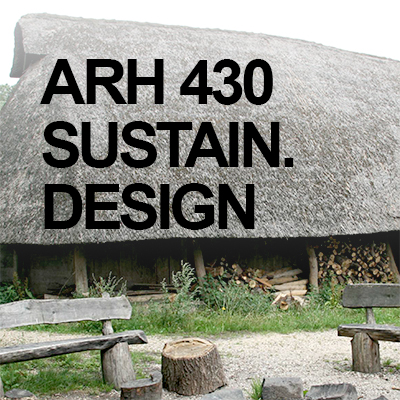
Course Learning Outcomes
- Analyze passive design strategies of vernacular buildings in different regions and climates
- Access, utilize, and interpret climate data within Climate Consultant to generate site specific charts and graphs
- Correlate climate, green-building strategies, and building performance of a case study building using environmental performance analysis softwares
- Identify and diagram sustainable strategies of case study buildings; Illustrate spatial and experiential consequences of sustainable strategies
- Model and analyze the performance of a basic wall assembly; calculate an estimated R-value and understand the basics of properties of materials used in standard architectural assemblies
- Discuss the global and local environmental realities that guide sustainable development, green building, and ‘green living’
- Discuss the financial rationale for green, or ‘high-performance’ building and differentiate between current green certification programs, standards, and codes
NAAB Criteria
- This course addresses NAAB PC.3 Ecological Knowledge and Responsibility: How the program instills in students a holistic understanding of the dynamic between built and natural environments, enabling future architects to mitigate climate change responsibly by leveraging ecological, advanced building performance, adaptation, and resilience principles in their work and advocacy activities
- This course addresses part of NAAB SC.1 Health, Safety, Welfare in the Built Environment (Understanding): How the program ensures that students understand the impact of the built environment on human health, safety, and welfare at multiple scales, from buildings to cities
- This course addresses NAAB Shared Values of Environmental Stewardship and Professional Responsibility: Architects are responsible for the impact of their work on the natural world and on public health, safety, and welfare. As professionals and designers of the built environment, we embrace these responsibilities and act ethically to accomplish them
